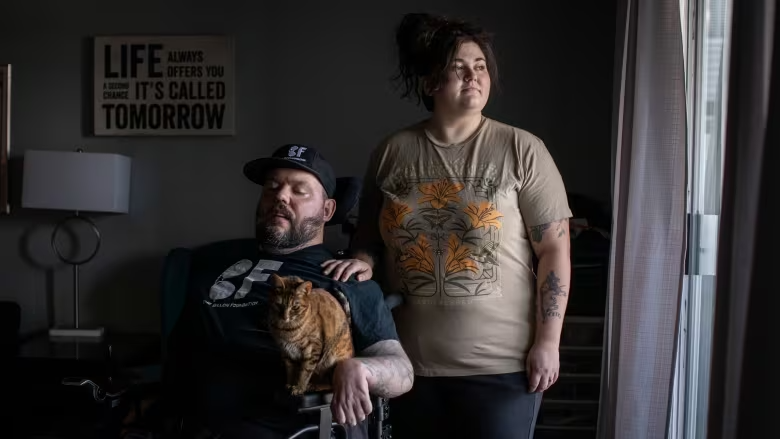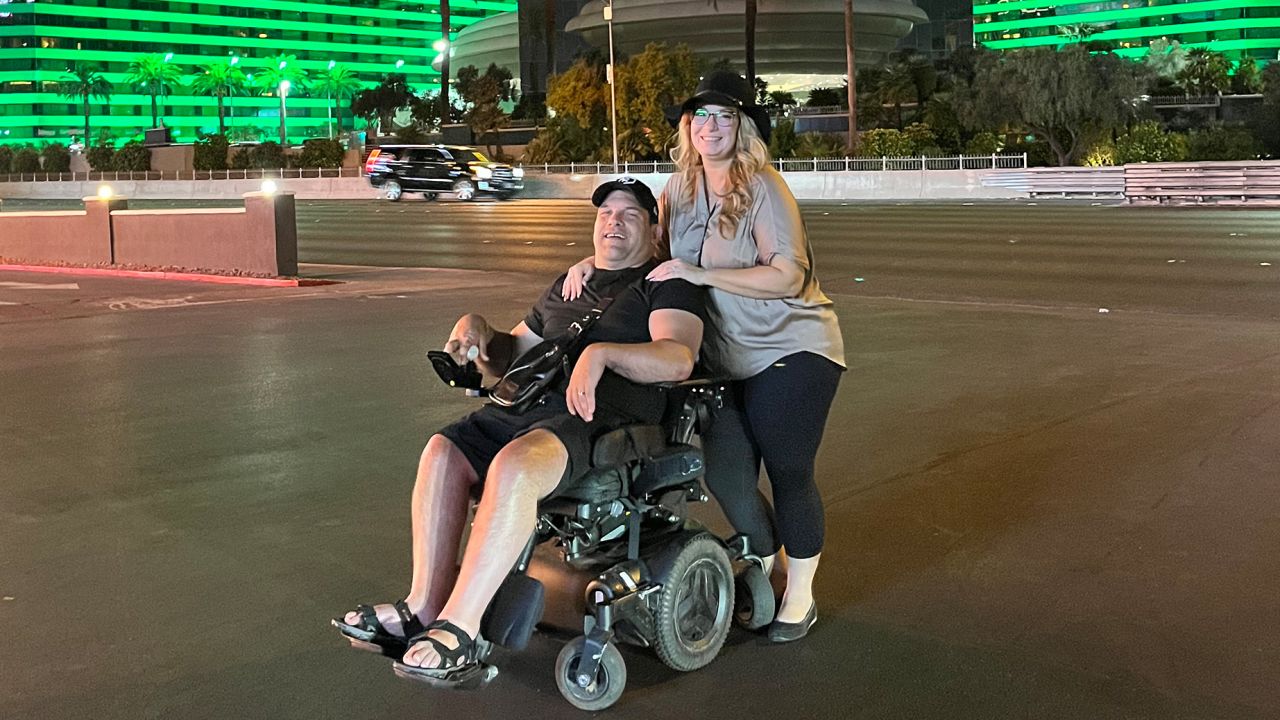Air Canada has announced its plan to make significant changes to its operations following several high-profile incidents involving disabled passengers. Four people with disabilities revealed their poor experiences flying with Air Canada this year. These incidents involved the airline not accommodating disabled passengers who required extra assistance. In one case, the passenger was forced to drag himself to the front of the aircraft before being able to use a wheelchair.
An Incident in Vancouver
The first incident involved a man with a wheelchair on an Air Canada flight that landed at Vancouver International Airport (YVR) in May. Ryan Lachance, who uses a motorized wheelchair due to having quad spastic cerebral palsy, was returning to Vancouver from Halifax Stanfield International Airport (YHZ). Lachance got injured while attempting to exit the flight in Vancouver.
Lachance travels with a care assistant and an eagle lift to move him onto aircraft seats. However, Air Canada's ground crew attempted to transfer him from the seat onto an aisle chair instead of using the eagle lift. Despite repeated warnings from Lachance's assistant about requiring an eagle lift, the crew continued forcing him into the aisle chair, a narrower version of a wheelchair. Lachance later fell off the aisle chair because the crew improperly handled his shoulders and legs.

The ordeal, which took more than an hour and a half, ended up with Lachance injured and bedridden for three days. He filed a formal complaint and was offered CA$500 ($362.40) in flight credits by Air Canada. Lachance revealed his perspective on the incident to Canadian media on November 2, including details about witnessing a similar incident at Toronto Pearson International Airport (YYZ) on an unspecified date. He requested that Air Canada provide better training to its staff on accommodating passengers with disabilities.
Another Incident in Las Vegas
The second incident involved a man being forced to drag himself off an Air Canada flight at Harry Reid International Airport (LAS) in August. Rodney Hodgins flew from Vancouver to Las Vegas to celebrate his first wedding anniversary with his wife. Hodgins uses a motorized wheelchair due to having spastic cerebral palsy.

Hodgins and his wife travel frequently, with each flight's crew helping him exit the aircraft. Unlike the incident involving Lachance, Hodgins uses an aisle chair to leave once the other passengers disembark. However, an Air Canada flight attendant informed him there would be no aisle seat or assistance on this flight. Rodney was required to move to the front of the aircraft independently.
After explaining his situation to the flight attendant to no avail, Hodgins forced himself to move off the plane. This process involved Hodgins moving himself onto the floor and then dragging himself from row 12 to the front of the aircraft. His wife tried helping him as he was visibly in major pain. Despite the pilots, flight attendants, and cleaning staff seeing Hodgins in pain, no one offered help.
Hodgins and his wife eventually reached the front of the aircraft. He received access to a motorized wheelchair after disembarking from the plane. Although the couple enjoyed their vacation in Las Vegas, Hodgins suffered from major pain for several days. He filed complaints with various Air Canada representatives, including on their flight back to Vancouver, before receiving a CA$2,000 ($1,449) flight voucher. The Canadian Transportation Agency has launched an investigation into this incident.

How Did Air Canada Respond?
These two incidents are not the only ones involving the mistreatment of disabled passengers on Air Canada flights. A third incident involved Air Canada forgetting the wheelchair of its chief accessibility officer on her flight from Toronto to Vancouver in October. On November 9, Air Canada finally announced measures to improve the passenger experience for disabled passengers after pressure from various stakeholders, including the passengers who previously witnessed poor treatment.
Craig Landry, Air Canada's Executive Vice President and Chief Operations Officer, said:
"In June, we released our three-year accessibility plan. The measures we are announcing today accelerate key components in that plan. This includes improving boarding and seating, better customer communications, new processes to prevent delays or damage to mobility devices, more training, and an investment in equipment such as lifts. We also intend to implement further measures as we strive to make Air Canada accessible for people managing disabilities."

Air Canada's CEO, Michael Rousseau, also released a statement apologizing to passengers for their poor experiences on the airline's flights. He acknowledged feedback from disabled customers and announced a commitment to do better.
The airline will enact these measures to accommodate disabled passengers better:
- Customers who request lift assistance will board first and receive seats at the front of their cabin class
- Storing mobility aids in the aircraft cabin or cabin hold, with a tracking process to ensure that mobility aids make it onto the plane
- Training for approximately 10,000 airport employees on effectively serving disabled customers
- Creating a Director of Customer Accessibility position to implement Air Canada's three-year accessibility plan
Canada views accommodations for disabled people as an essential component of diversity and inclusion. The Canadian government has a Minister of Diversity, Inclusion, and Persons with Disabilities who focuses on these issues. Air Canada's new measures align with the government's goal to eliminate barriers for disabled Canadians by 2040. These measures are essential as Canada witnesses growing travel demand from people with disabilities.
Coloring the Clouds: How ANA Turned Airplanes into Art » End of an Era: JetBlue's Farewell to the Embraer E190 » Citation C550 Fireball: Greg Biffle and Five Others Killed in Failed Emergency Landing at KSVH »
Comments (6)
 Kaylee
Howdy! Do you know if they make any plugins to assist with Search Engine Optimization? I'm trying to
get my site to rank for some targeted keywords but I'm not seeing very
good success. If you know of any please share. Thank
you! You can read similar text here: GSA List
Kaylee
Howdy! Do you know if they make any plugins to assist with Search Engine Optimization? I'm trying to
get my site to rank for some targeted keywords but I'm not seeing very
good success. If you know of any please share. Thank
you! You can read similar text here: GSA List
 Anya
Good day! Do you know if they make any plugins to assist with SEO?
I'm trying to get my site to rank for some targeted keywords but I'm not seeing very good success.
If you know of any please share. Appreciate it!
I saw similar blog here: Scrapebox AA List
Anya
Good day! Do you know if they make any plugins to assist with SEO?
I'm trying to get my site to rank for some targeted keywords but I'm not seeing very good success.
If you know of any please share. Appreciate it!
I saw similar blog here: Scrapebox AA List
 Roland
Hi! Do you know if they make any plugins to
assist with SEO? I'm trying to get my blog
to rank for some targeted keywords but I'm not seeing very good results.
If you know of any please share. Thank you!
You can read similar text here: Sklep internetowy
Roland
Hi! Do you know if they make any plugins to
assist with SEO? I'm trying to get my blog
to rank for some targeted keywords but I'm not seeing very good results.
If you know of any please share. Thank you!
You can read similar text here: Sklep internetowy
 Uwe
Hello! Do you know if they make any plugins to assist with SEO?
I'm trying to get my blog to rank for some targeted keywords but I'm not seeing very
good gains. If you know of any please share. Cheers! You can read similar art here:
E-commerce
Uwe
Hello! Do you know if they make any plugins to assist with SEO?
I'm trying to get my blog to rank for some targeted keywords but I'm not seeing very
good gains. If you know of any please share. Cheers! You can read similar art here:
E-commerce
 Lenard
You really make it appear so easy with your presentation but I to find this topic to be really something which I feel I
would by no means understand. It seems too complex and extremely broad for
me. I'm looking ahead to your subsequent submit, I'll attempt to get the dangle of it!
I saw similar here: Sklep internetowy
Lenard
You really make it appear so easy with your presentation but I to find this topic to be really something which I feel I
would by no means understand. It seems too complex and extremely broad for
me. I'm looking ahead to your subsequent submit, I'll attempt to get the dangle of it!
I saw similar here: Sklep internetowy
 Kristeen
I was recommended this website via my cousin. I am not certain whether or
not this submit is written by him as no one else recognise such precise approximately my difficulty.
You're amazing! Thank you! I saw similar here:
sklep online and also here: sklep online
Kristeen
I was recommended this website via my cousin. I am not certain whether or
not this submit is written by him as no one else recognise such precise approximately my difficulty.
You're amazing! Thank you! I saw similar here:
sklep online and also here: sklep online
Add Your Comment
SHARE
TAGS
NEWS Disability Air Canada Travel Reform CanadaRECENTLY PUBLISHED
 Mexican Medical Plane Crashes in Galveston Bay During Rescue Mission
Search and rescue operations are continuing into the evening in West Galveston Bay following the crash of a Mexican military medical flight. The Beech King Air 350, which was carrying eight people (two pilots and six passengers), went down around 3:15 p.m. on Monday as it approached Scholes International Airport.
NEWS
READ MORE »
Mexican Medical Plane Crashes in Galveston Bay During Rescue Mission
Search and rescue operations are continuing into the evening in West Galveston Bay following the crash of a Mexican military medical flight. The Beech King Air 350, which was carrying eight people (two pilots and six passengers), went down around 3:15 p.m. on Monday as it approached Scholes International Airport.
NEWS
READ MORE »
 Direct Minsk-New York Flights? Belavia Weighs Transatlantic Return for 2026
Following a series of diplomatic breakthroughs in late 2025, Belavia, Belarusian Airlines, is officially exploring the feasibility of a direct link between Minsk National Airport (MSQ) and New York's John F. Kennedy International Airport (JFK).
ROUTES
READ MORE »
Direct Minsk-New York Flights? Belavia Weighs Transatlantic Return for 2026
Following a series of diplomatic breakthroughs in late 2025, Belavia, Belarusian Airlines, is officially exploring the feasibility of a direct link between Minsk National Airport (MSQ) and New York's John F. Kennedy International Airport (JFK).
ROUTES
READ MORE »
 Air France Suspends Paris-Manila Service for Summer 2026
Air France has announced a significant adjustment to its Southeast Asian network, confirming that its direct service between Paris Charles de Gaulle (CDG) and Manila (MNL) will transition from year-round to seasonal operation starting in 2026.
ROUTES
READ MORE »
Air France Suspends Paris-Manila Service for Summer 2026
Air France has announced a significant adjustment to its Southeast Asian network, confirming that its direct service between Paris Charles de Gaulle (CDG) and Manila (MNL) will transition from year-round to seasonal operation starting in 2026.
ROUTES
READ MORE »


